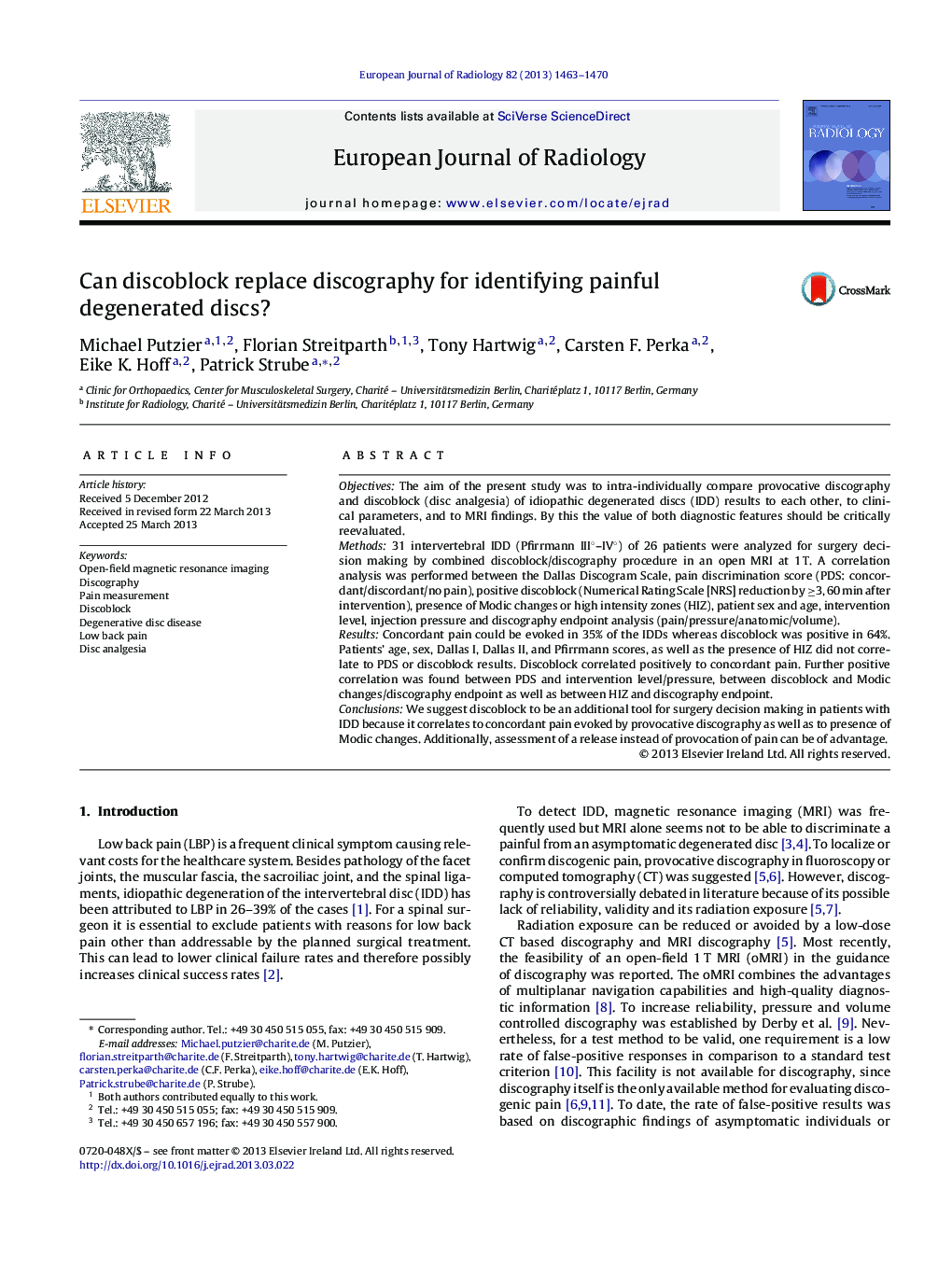| Article ID | Journal | Published Year | Pages | File Type |
|---|---|---|---|---|
| 4225706 | European Journal of Radiology | 2013 | 8 Pages |
ObjectivesThe aim of the present study was to intra-individually compare provocative discography and discoblock (disc analgesia) of idiopathic degenerated discs (IDD) results to each other, to clinical parameters, and to MRI findings. By this the value of both diagnostic features should be critically reevaluated.Methods31 intervertebral IDD (Pfirrmann III°–IV°) of 26 patients were analyzed for surgery decision making by combined discoblock/discography procedure in an open MRI at 1 T. A correlation analysis was performed between the Dallas Discogram Scale, pain discrimination score (PDS: concordant/discordant/no pain), positive discoblock (Numerical Rating Scale [NRS] reduction by ≥3, 60 min after intervention), presence of Modic changes or high intensity zones (HIZ), patient sex and age, intervention level, injection pressure and discography endpoint analysis (pain/pressure/anatomic/volume).ResultsConcordant pain could be evoked in 35% of the IDDs whereas discoblock was positive in 64%. Patients’ age, sex, Dallas I, Dallas II, and Pfirrmann scores, as well as the presence of HIZ did not correlate to PDS or discoblock results. Discoblock correlated positively to concordant pain. Further positive correlation was found between PDS and intervention level/pressure, between discoblock and Modic changes/discography endpoint as well as between HIZ and discography endpoint.ConclusionsWe suggest discoblock to be an additional tool for surgery decision making in patients with IDD because it correlates to concordant pain evoked by provocative discography as well as to presence of Modic changes. Additionally, assessment of a release instead of provocation of pain can be of advantage.
